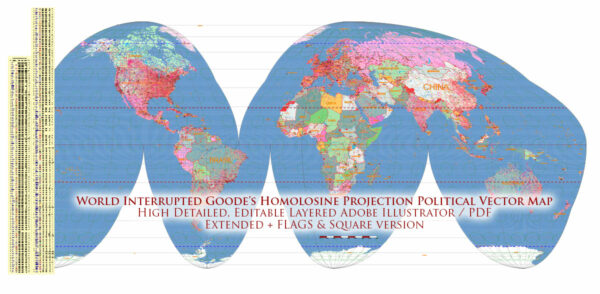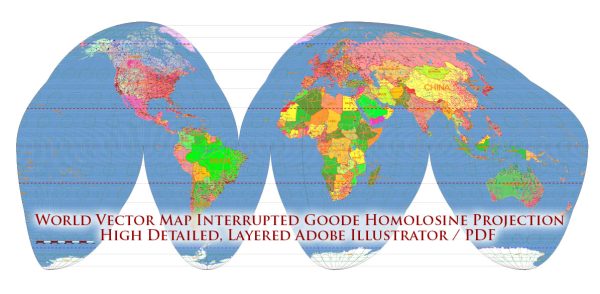The Homolosine projection was developed by John Paul Goode, an American cartographer, and geographer.
Vectormap.Net provide you with the most accurate and up-to-date vector maps in Adobe Illustrator, PDF and other formats, designed for editing and printing. Please read the vector map descriptions carefully.
Vectormap.Net provide you with the most accurate and up-to-date vector maps in Adobe Illustrator, PDF and other formats, designed for editing and printing. Please read the vector map descriptions carefully.
John Paul Goode (1862–1932) was a prominent figure in the field of cartography. He was a professor at the University of Chicago and served as the president of the American Geographical Society. Goode is best known for his work on map projections.
The Homolosine projection, specifically, was created by Goode in 1923. The purpose of this projection was to minimize distortion in size and shape, especially in relation to land masses. The Homolosine projection is an equal-area pseudocylindrical map projection, and it represents an attempt to find a compromise between minimizing distortion and presenting a visually appealing map.
Goode’s Homolosine projection has been used for various thematic maps and has been praised for its balance between equal-area properties and reasonable representation of shapes. However, like any map projection, it has its limitations and trade-offs.
In summary, John Paul Goode, was the creator of the Homolosine projection, and he made significant contributions to the field of cartography during the early 20th century.



 Author: Kirill Shrayber, Ph.D.
Author: Kirill Shrayber, Ph.D.